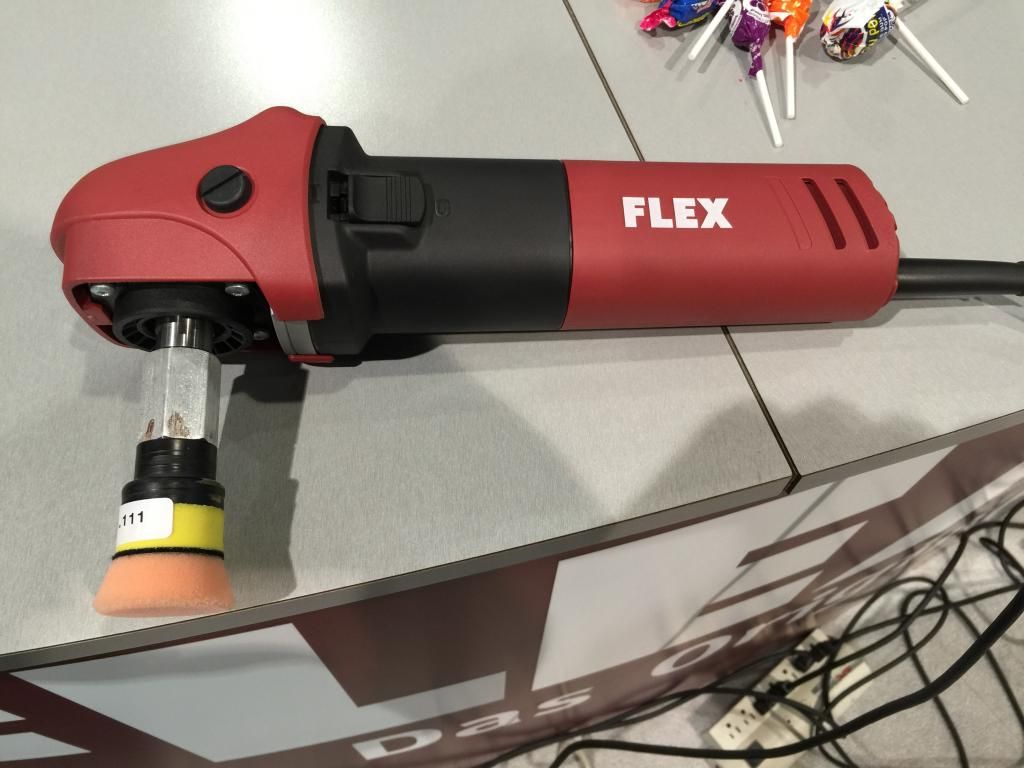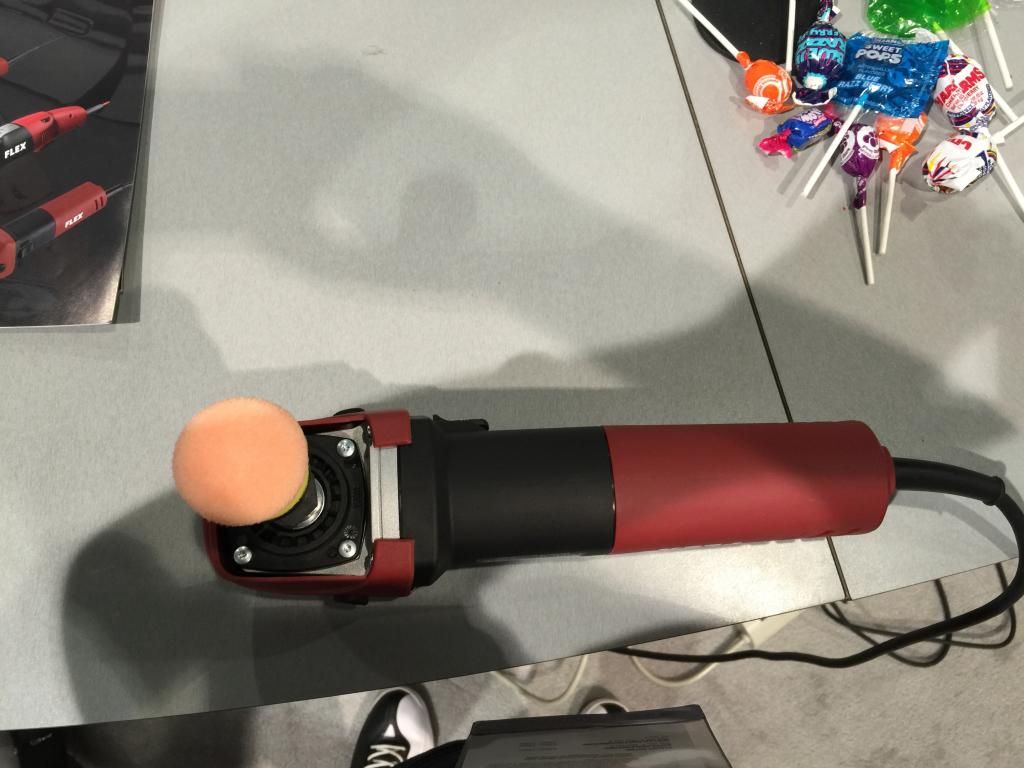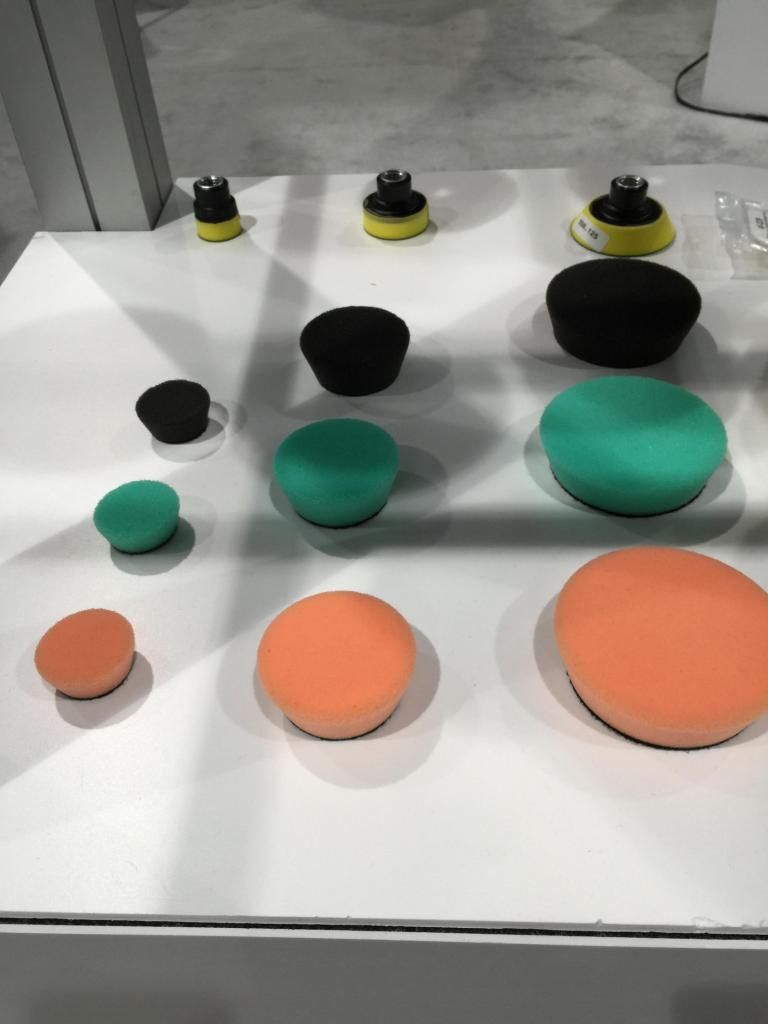The 1" and 2" and 3" Flex buffing pads and the matching backing plates can be used on any rotary buffer that has the industry standard 5/8" threaded arbor.
The problem you run into is the word,
Tippy
That is when buffing horizontal panels with a huge tool and a tiny pad --> you <-- have to pay more attention to what your doing because the bulky, large mass and extra weight of the full size rotary buffer sitting on top of the tiny pads is tippy.
It's also
awkward and
cumbersome. But it can be done. Working with the tool on vertical panels it's less of an issue because "you" are now supporting the weight of the rotary buffer and without thinking much about it you automatically "control" the tool.
It's when buffing horizontal panels and areas that the weight of a full size rotary buffer just by itself will compress small foam pads like these and thus you need to do more work and more thinking about what you're doing.
Heck even the PE14 weight enough to compress a gold jewelling pad as I explain here,
1990 Corvette - Extreme Makeover Pictures & Process
Tips on how to jewel paint using a rotary buffer
Before starting, we went over a few tips and techniques for how to jewel paint when using a rotary buffer.
Less than the weight of the machine
This is showing that we're actually using a little bit less than the weight of the machine for the last few passes for this section. The idea being that polishing paint is an art form, not a grinding process. As the pad becomes wet with product it will easily compress with just the weight of the tool. For your last few passes you want light pressure via the pad contact, now heavy pressure and to get light contact you need to watch and prevent pad compression.














